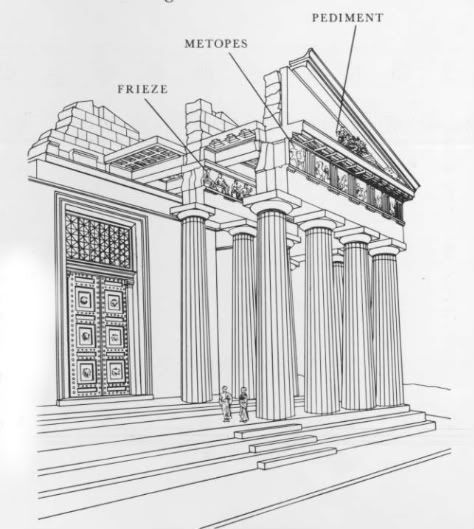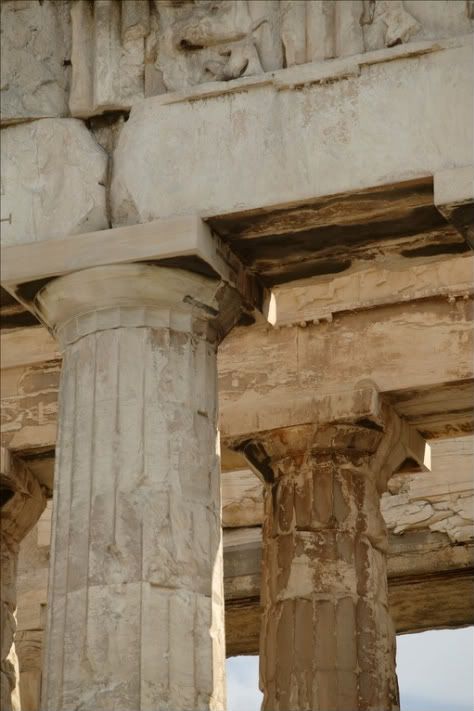☆ 007 ; a counter-argument

I'd like to put forth the idea that the Parthenon is actually not the ideal temple type, yet maybe a super-ideal... I don't know, what do you call it when you break the archetype? It's not a hybrid, not a prototype, not the archetype, BUT it's also the very symbol of ancient Greece, the one building probably everyone in the Western world will imagine if you ask them about Athens. A symbolic un-archetype. It's certainly possible but I think it's strange that in a society that is purported to have chased the ideal form wouldn't create the truest ideal form as their most visible structure.
First of all, the ideal temple type measured six columns across the front. Now if you look at the picture at the top, how many columns are there? Count 'em-- eight! Two extra columns. Not only that but at the porch areas the columns are doubled up, that is to say, there are two rows, but only six on the inside. This sets the temple form up for an unusual opportunity.

Unlike the ideal temple type which has a single frieze that correlates to its order, the Parthenon has two friezes, a Doric outer frieze with triglyphs and metopes, which depict battles between the gods and other mythological creatures, and an Ionic inner frieze, which depicts the Panathenaic Procession, which occurred every four years. The outer and inner layers of columns are all of the Doric order, as well, so not only is it odd to have two friezes, the second frieze doesn't even correspond with the set of rules of its order.

To speculate on why the Parthenon was built this way I'd like to pull back on the idea of its visibility and the fact that the ancient civilization[s] situated on the Grecian peninsula were ones of warring city-states, and there was always a need to best the others. The people of Athens wanted to represent themselves and Athena in such a way that their superiority wouldn't be questioned. I think this harkens back to the idea of the wu-wu. If columns are wu-wus, which, I mean, you can't really argue otherwise [phallic symbol is really phallic!], then having more wu-wus than your competitor? Yes! It's not only size, kids, but quantity.
Also, the Parthenon did, at some point, serve as a treasury, so it was all about making a statement about wealth. If they could afford to have the eight columns and two friezes and whatever else they wanted then why not? In this way Athens said to the other city-states that not only were they better, but more well-off, too.

A final [slightly unrelated] note about color: don't make the mistake in thinking that these structures and sculptures were bone-white stone, they were actually painted. I bet it was real striking, too, and it's too bad the paint didn't survive. I think what's interesting about this, though, is that in following civilizations, particularly in the United States with governmental or financial buildings such as the White House, during reprisals of the Classical style [Neoclassicism, for example], these buildings totally lack in color. I can't help but wonder if the original colors of the Parthenon survived if our own buildings would look different. I think yes. It would be neat to see what color choices they would make... the obvious is red and blue, but that seems a bit tacky, no? It works for the Parthenon because, I'm assuming, there's no prior cultural attachments to the colors, at least not as strongly as we attach ourselves to red, white, and blue. Imagine the Capitol Building in those three colors, it would look like the Fourth of July puked all over it. It's just too obvious for my tastes.


0 Comments:
Post a Comment
Subscribe to Post Comments [Atom]
<< Home